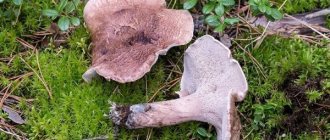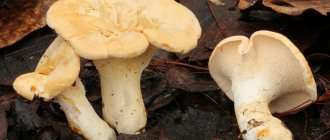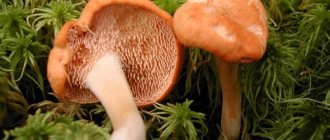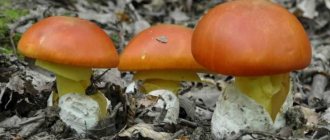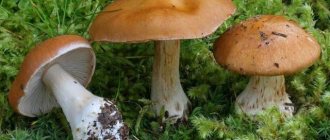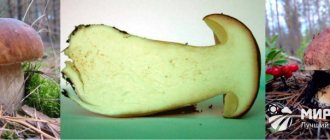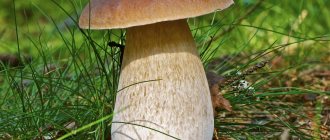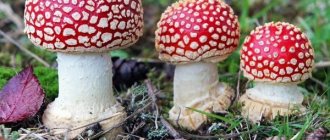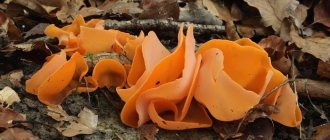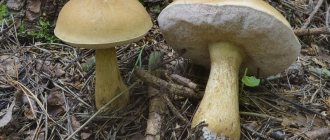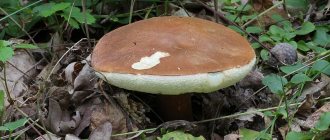World-famous chefs, the French, have already appreciated all the benefits of the taste of blackberry. In the cuisine of this country, the mushroom is present as a delicacy dish, presented as an appetizer, side dish or main accord. There are recipes for preparing all kinds of sauces, salads and soup dressings, which are also made from blackberry.
Cooking Methods
At a young age, hedgehog mushrooms are often confused with other edible mushrooms - honey mushrooms. The hedgehog is indeed somewhat similar to both the honey fungus and the chanterelle, not only in its external appearance, but also in its taste. And the preparation of the mushroom is almost the same.
The opinion has become widespread that only young mushrooms are suitable for cooking. It is fundamentally wrong, since only a mature mushroom, with the right approach, can fully reveal its amazing taste and alluring aroma.
The main culinary trick to preparing blackberry is that it is first boiled in slightly salted water to give it a pleasant softness, and then the mushroom can be fried or stewed. The difference is guaranteed: harvesting raw, uncooked blackberry is in many respects inferior in taste to pre-prepared mushroom.
Blackberries must first be boiled in salted water to make them soft.
Where and when does it grow?
Distributed in the temperate climates of North America and Eurasia; also on the territory of Russia - in the European part, Siberia and the Far East. It forms mycorrhiza with various deciduous and coniferous trees, grows in forests, often on calcareous soil, and selects moss cover. Mainly found in light forests mixed with birch. It is popularly called – notched blackberry, yellow blackberry, notched hydnum, notched dentium. They begin to collect at the beginning of summer and until the end of autumn, right up to frost.
The advantages of preparing for the winter
Naturally, each housewife has her own recipe, which amazes the household and guests of the house with its results. By the way, pickling is not the only recipe for preserving the amazing taste and unique, almost fruity aroma of hedgehog mushrooms after the picking season has already passed. Moreover, preparing dry mushrooms takes less time and effort, but at the same time provides a wider field for culinary experiments and further preparation of mushroom dishes.
Preparing your favorite mushrooms for the winter is the best way to ensure that you can enjoy your favorite blackberries all year round, regardless of the season.
Once again asking yourself the question of what you can prepare in the winter, which is not rich in the gifts of nature, and thereby please your family and guests, remember the autumn preparation - dried hedgehogs. By adding a few mushrooms to the soup, you will refresh the taste of the dish and give it a unique aroma.
Other options for cooking your favorite product
The instructions on how to cook fried mushrooms are characterized by extremely simple rules. First, you should rinse each mushroom and clean it (remove the remaining mycelium from the end of the legs). A dry frying pan should be greased with vegetable oil and heated on the stove. Next, you need to cut the blackberries into pieces of approximately the same size and pour them into a hot frying pan. Mushrooms should be cooked over low heat on the stove; in the middle of the frying process, you will need to add finely chopped onions and bring the dish to readiness.
Blackberry mushrooms are fried with the addition of chopped onions
We continue to get acquainted with unusual mushrooms found in Belarusian forests, together with the poet and experienced mushroom picker Sergei Sys. This time there are several of them: variegated hedgehog, donkey's moth and ringed cap.
Nutritional value and chemical composition
Hedgehog mushrooms belong to different genera and families, each of which has its own nutritional value and chemical composition. For example, comb blackberry contains vitamins, beta-D-glucans, organic acids (palmitic, arbitinol, others), substances with an antitumor effect, hericenones, erinacins, arabitinol, D-threitol.
This type is quite high in calories - 30 kcal/100 grams of pulp, contains:
- 3.7 grams of protein;
- 1 gram of carbohydrates;
- 1.99 grams vegetable fat.
Variegated hedgehog
Acquaintance with this mysterious mushroom occurred relatively recently, in 2004, in the Gomel region. My friend and I went to pick mushrooms, right next to the Ukrainian border, where he has a dacha. And there I “picked up” several pieces of an unknown mushroom. A lot of time passed before it was possible to identify it: a mushroom-hedgehog, or correctly - variegated hedgehog, variegated sarcadon, hawk. Regional Belarusian names: ox tongue (Belostochina), elk (Vileyshchina, Gomel region), elk mushroom (Myadelshchina), bear (Lidchina), goat, sarny (Brest region), grouse (Svetlogorsk—Parichi—Ozarichi)…
I tried it later - I was a little afraid of such exoticism. Why am I writing about him now? Because they come out late, from the second half of August until November.
It is not very famous, even rare, but if you come across it, you can immediately cut up a whole heap. It has a specific aroma with bitterness. But after 5 minutes of cooking, the bitterness goes away, and then the blackberry can be boiled, fried, salted, pickled, or dried. You should know that it is better to eat young mushrooms. And the overripe ones, they say, are too bitter and tough.
Otidea donkey
In October-November, in forest clearings or in old deciduous felling areas, you may be lucky enough to encounter a group of very rare mushrooms. They say about them: once you see them, you will never forget them. And this is all because of the similarity with animal ears. It’s not for nothing that they called it that: donkey’s ear, or donkey’s ear (Otidea onotica). I will add that there are also other rare species.
No one collects or cooks donkey ear. I haven’t tried it either, although they write that donkey ear “has a pleasant smell and, in principle, these mushrooms can be eaten, they do not pose a threat to health.”
I have never met them in the Minsk region. I saw it twice in the Chechersky and Kormyansky districts of the Gomel region, but there, most likely, all the mushrooms “smell” with radiation. It is possible that they also grow in Polesie, it remains to be clarified.
I hope that one day a donkey’s ear will “cross” my path and then I will definitely try it.
And I ask you very much: if anyone meets Otidea in Belarus, write to me in which region, so that I can study its range.
How to recognize and collect yellow hedgehogs
Typically, when a mycelium encounters an “obstacle”, such as a ditch or dry area on the border with a wetter area, it reacts to this barrier and tries to overcome it. Yellow hedgehogs grow abundantly in these places and distribute fruiting bodies along the border.
If you notice white, massive clumps of mushrooms in the distance, your chances of finding blackberry mushrooms are high. Where there are several, there will inevitably be many; they grow in groups. Once you find it, walk carefully so as not to step on it and break it.
Ringed cap
It is timely now to raise our voices in defense of one of the most widespread autumn mushrooms, which are so shamelessly trampled and crumbled underfoot by ignorant mushroom pickers, who would only give young boletus mushrooms... We will talk about the ringed cap (Rozites caperatus). Belarusians affectionately call this pinkish-red mushroom chicken. And also in different regions - swamps, mistakenly - champignons.
To be honest, I was somehow reluctant to collect them earlier, since I can find other good things - if only I had time. Yes, a couple of years ago Elena Laptyonok boasted that she had collected chickens, saying they were so tasty. In short, I was intrigued.
Well, I tried it. Nothing! Can be eaten and pickled. But experimentally I determined that it is best to salt them. Firstly, you can prepare a lot at once. Secondly, there is no need to soak it for days, like volnushki or some kind of loading. Thirdly, you don’t have to wait a month for them to pickle; just five or six days are enough and you’re ready.
Let me remind you that they grow everywhere from the end of July to October in large families.
Pay attention and don't trample them. Chickens deserve a better life!
Variegated hedgehog is a rare guest on our tables, and the name itself sounds unusual. Nevertheless, avid mushroom pickers are sure that this is a very valuable, useful and interesting product, worthy of getting to know it better.
Number, time and place of fruiting
Hericium combinatum is rarely found in the wild. It is classified as a saprotrophic mushroom, i.e., one that grows on rotten trees and stumps.
This representative of the forest kingdom prefers birch, oak or beech as places of settlement. It is especially common in saw cuts, in hollows, and on broken branches.
Warm and humid climates are the favorite environment for blackberries. In Russia, it can occasionally be found in the forests of the Khabarovsk Territory, Amur Region, Primorye, the Caucasus and Crimea.
The fruiting season begins in August and lasts until October. Hericium echinus is listed in the Red Book.
Description
The variegated hedgehog mushroom belongs to the genus Sarcodon of the Banker family. Latin name: Sarcodon Imbricatus or Sarcodon squamosus.
Also bears the names: imbricated hedgehog, scaly hedgehog, imbricated sarcodon, variegated sarcodon, kolchak mushroom. In some areas it is called "chicken" or "hawk".
A little history
The mushroom has been known since ancient times and was widely used in ancient China. A group of researchers led by Alexei Krotov was the first to describe and add the variegated hedgehog to the classification in 1929.
hat
The diameter of the cap can reach 25 cm. In a young mushroom it looks like a dome, after which it flattens, maintaining a slight convexity. Over time, it sometimes takes on a concave appearance. Velvety and dry.
The entire surface of the cap is covered with large brown scales that fit quite tightly to each other. The edge of each of them is slightly bent upward. However, the mushroom does not look disheveled. The upper part of the scales is darker in color, sometimes it can be almost black. Rising above the surface of the cap, they expose the skin of lighter shades. Visually, the mushroom appears variegated, which is what gave rise to its specific name.
Hymenophore
The hymenophore (the lower part of the cap) is covered with fragile needle-like spines, which are easily separated from the stem. In young specimens, the needles are almost white; in mature specimens they take on a brown tint.
Pulp
The fruiting body of the hedgehog is white; as the mushroom matures, it takes on a gray color. The older it is, the tougher its flesh becomes. Has a spicy smell.
Leg
The stem of the mushroom is not loose, in the shape of a cylinder with a slight thickening at the base. It has a gray-brown tint. Specimens with purple stems are rare. In young mushrooms it is solid, in old ones it is hollow inside. It reaches 8 cm in length and 2.5 cm in thickness.
Fruiting body
The size of the fruiting body reaches 20 cm, and the weight can reach up to 1.5 kg. The shape can be irregular or round, the color can be white, cream, beige or something close to this color palette. The surface of the mushroom is spiny, with thin needles hanging down, so hedgehogs are very similar to Blackberry. It has whitish and fleshy flesh, which turns yellow when deprived of air.
The blackberry has numerous elongated hymenophore spines. The fruit body has a round shape, which is slightly flattened on the sides. Over time, the spines of the hymenophore acquire a brown tint, as they tend to dry out, and, accordingly, darken when dry.
Blackberry has a fairly elastic and dense structure.
Growing at home and in the country
Blackberry does not lend itself well to industrial cultivation and, moreover, has a very specific, pronounced spicy taste, so it has not received wide recognition in cooking. But true connoisseurs can easily grow this mushroom in their summer cottage. Planting material is purchased in specialized stores. It consists of wooden sticks with spores. Sarcodon imbricata can be planted in open ground from April to October, in protected ground - at any time of the year. Spores germinate in wood. Recently felled logs, cleared of shoots, are good for this. The length of such a beam must be at least 1 m and the diameter 15–20 cm.
Before transferring the planting material into the wood, it is soaked and holes 4 cm long and about 1 cm in diameter are made in it every 10 cm. After planting the mushroom sticks, the logs are covered with film and placed in a warm, dark room. Water 2-3 times a week.
After the mycelium appears, the decks are brought out into the light. After 5-6 months the harvest will appear. For the winter, you need to organize a shelter over the log.
When working with planting material, you should either wear sterile gloves or pre-disinfect your hands.
Appearance of yellow hedgehog
The cap is creamy white, with irregular wavy edges and pits on the upper surface, which feels like fine velvet and turns slightly red when pressed. The firm, crunchy flesh of this large edible mushroom is mildly spicy and reminiscent of chanterelle mushrooms (Cantharellus cibarius). The irregularly shaped cap is typically 4 to 15 cm across.
The spines on the underside of the cap are soft, hang down like stalactites, and cover the entire surface of the fruit. The spines are from 2 to 6 mm and grow towards the stem.
The stem is white, cylindrical, 5 to 10 cm in height and 1.5 to 3 cm in diameter, hard. Spores are ellipsoidal, smooth. The spore seal is white.
The smell/taste is “mushroomy”; the ripe fruit tastes bitter in the mouth if you hold the raw pulp for a few seconds.
False doubles
- The blue-legged hedgehog (Sarcodon glaucopus) is similar to the variegated one, but unlike it, it has a smooth cap and blue colored legs at the base.
Rough hedgehog (Sarcodonscabrosus) is a mushroom distinguished by a lighter cap and small pressed scales. It does not contain toxic substances, but is unsuitable for food due to its bitter taste.
Sarcodonamarescens is an inedible species. A distinctive feature is the bright bluish-black color of the leg at the base.
Yellow hedgehog (Hydnum repandum) - similar to variegated after the latter has thoroughly faded in the sun. The mushroom can be eaten and has good taste.
The flake fungus (Strobilomyces strobiaceus) is a rare species. Its variegated cap is identical to the Hedgehog imbricate, but the hymenophore has a tubular structure. Also, despite the external similarity, the cone mushroom is a representative of the Boletaceae family and forms mycosis more often with deciduous trees. Fruits earlier
The kolchak mushroom has no poisonous counterparts, so you don’t have to worry about poisoning.
Similar species
Most of all, the yellow hedgehog is similar to its closest relative, Chanterelle . Culinary experts claim that their taste qualities are also similar. The difference between these species is obvious: the chanterelle is a lamellar mushroom, while the hedgehog has a spiny hymenophore. In addition, the yellow hedgehog is similar to another representative of the genus of hedgehogs - reddish-yellow . It differs only in size (the reddish-yellow hedgehog is somewhat smaller) and color. In all other respects the two species are similar.
1- Chanterelle. 2- Hedgehog is reddish-yellow.
There are no similar species that are poisonous or inedible.
Evaluation of taste qualities, medicinal properties, benefits and possible harm
Experts rate the taste of the hedgehog as average. It requires mandatory heat treatment; when boiled, it is not aromatic enough, but it is excellent for making seasoning by grinding dried raw materials. But even this addition to dishes has a very specific taste and is not universal and widely used.
The mushroom is able to reduce cholesterol levels and is a powerful immunomodulator.
The scaly hedgehog has never been used in folk medicine, but scientists in the laboratory were able to extract from it substances that can have a broad-spectrum antimicrobial effect, neutralizing even Staphylococcus aureus and Salmonella.
Studies have also proven that preparations from variegated kolchak can be beneficial for cancer. True, in practice, efficiency statistics have not yet been collected outside the walls of research laboratories.
Ointments are prepared from the mushroom to treat skin diseases, as well as cosmetic products for its nutrition and rejuvenation.
Contraindications include:
- individual intolerance;
- increased sensitivity of the gastrointestinal tract;
- liver diseases;
- Not recommended for use by children under 5 years of age and pregnant women.
Interesting Facts
Crested hedgehog.
- The price of large wild specimens of comb blackberry reaches $3,000.
- The combed hedgehog is cultivated and grown artificially, especially en masse in Japan and China.
- A short book could be written about the healing properties of this mushroom. Let us only mention that blackberry extract is used in the treatment of neurological diseases, oncology, diseases of the musculoskeletal system, and respiratory pathologies.
Cooking recipes
Let's consider how to process the mushroom before consumption and in what form it can be eaten.
Cleaning
Before you start preparing any dishes from the motley hedgehog, you need to get rid of the remaining spines and soil on it, and also rinse it in running water. The only exception: if you want to get a dried mushroom, you just need to peel it and wipe it with dry material. Should not be washed.
Cooking
Boiling helps remove unpleasant bitterness. This should be done within 15–20 minutes. If you plan to use boiled blackberry for soup, then it is best to add several more types of mushrooms to it, so the dish will be more aromatic.
Nutritional properties
These mushrooms have an original taste, so they are often used in oriental cooking. The hedgehog cap has a nutty, sweetish taste, vaguely reminiscent of shrimp. A mature mushroom may have a bitter taste, so it is used for cooking after preliminary heat treatment.
The combed hedgehog is popular among nutritionists. It has high nutritional value, and the energy value does not exceed 22 Kcal per 100 g. This means that when consuming it, a person will feel cheerful and full without fear of gaining excess weight.
The mushroom contains the following beneficial microelements:
- selenium;
- potassium;
- phosphorus;
- calcium;
- sodium;
- magnesium.
In addition, the composition of the combed hedgehog includes vitamins and amino acids necessary for the proper functioning of all body systems.
This mushroom can be consumed both raw and cooked. It is fried, boiled, dried and pickled. Medicinal ointments and decoctions based on blackberry are widely used.
